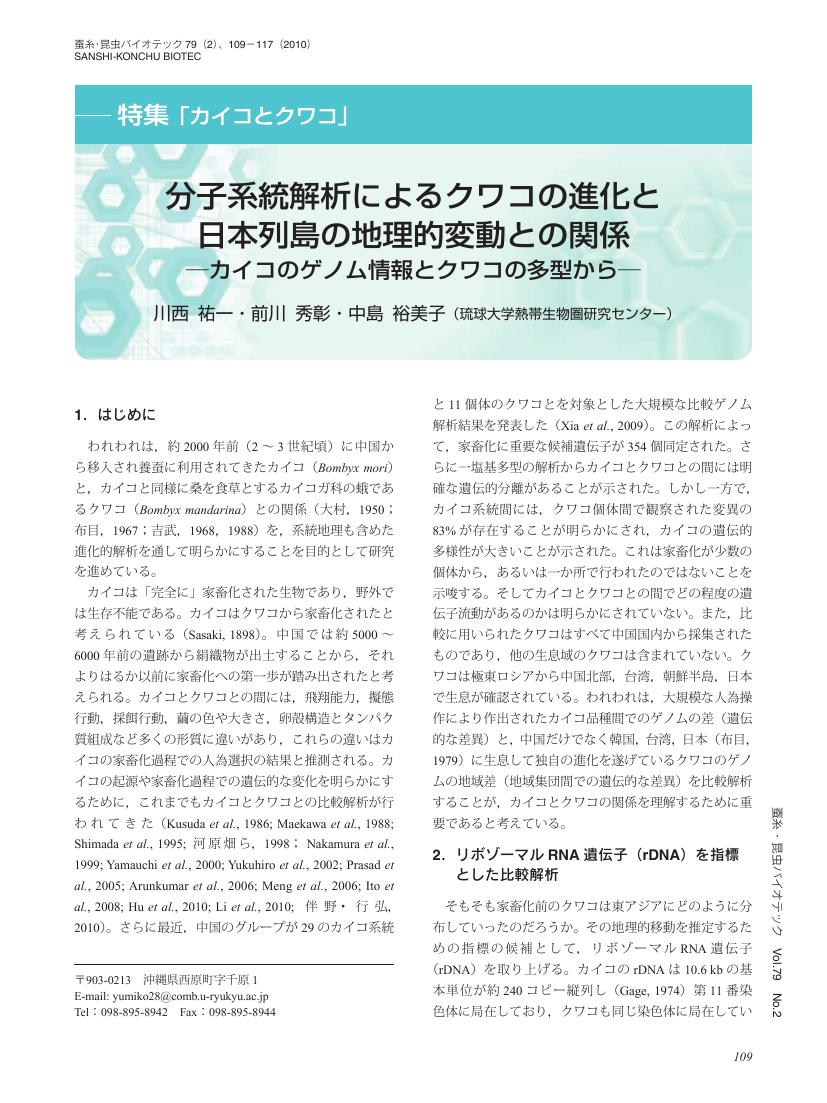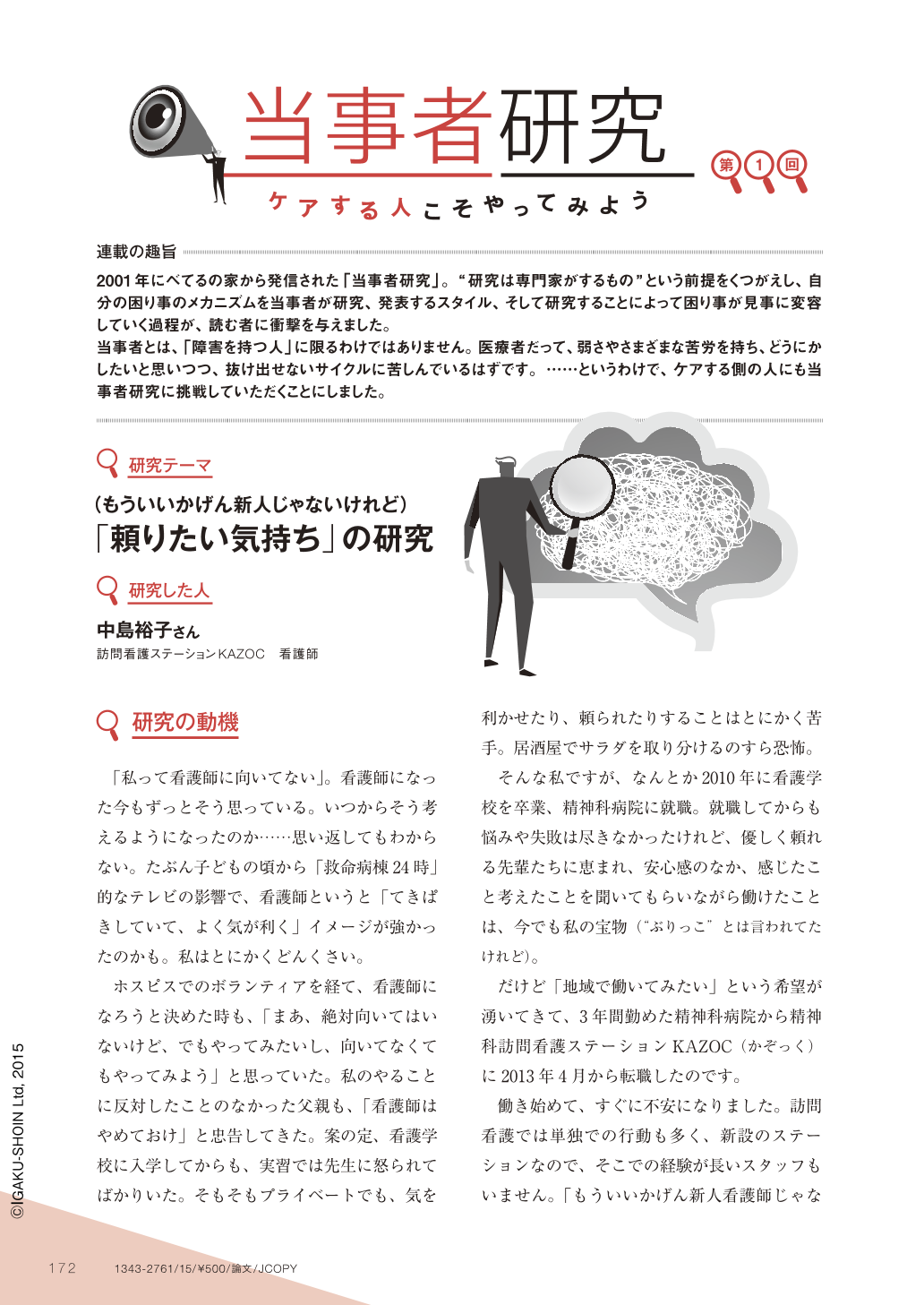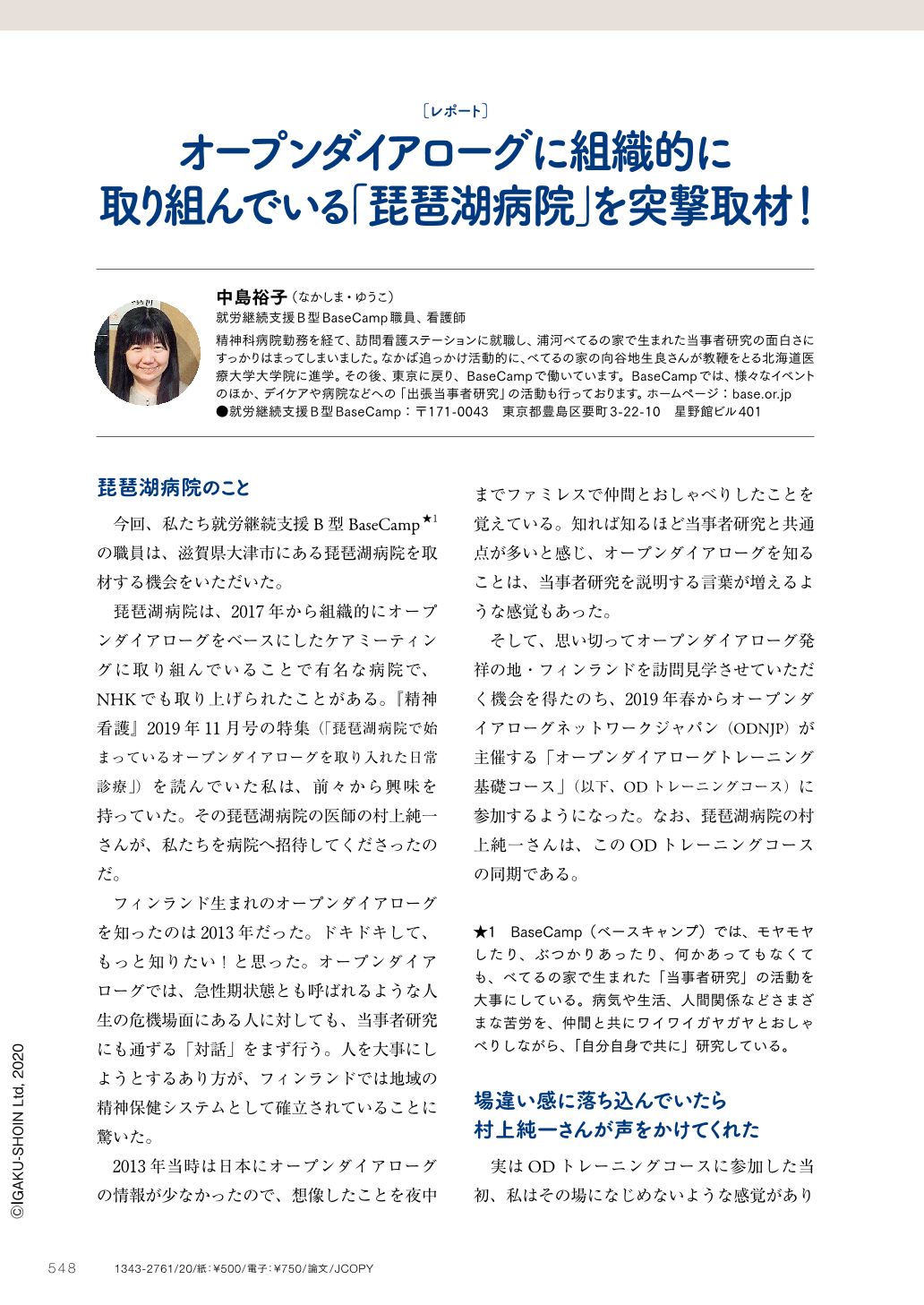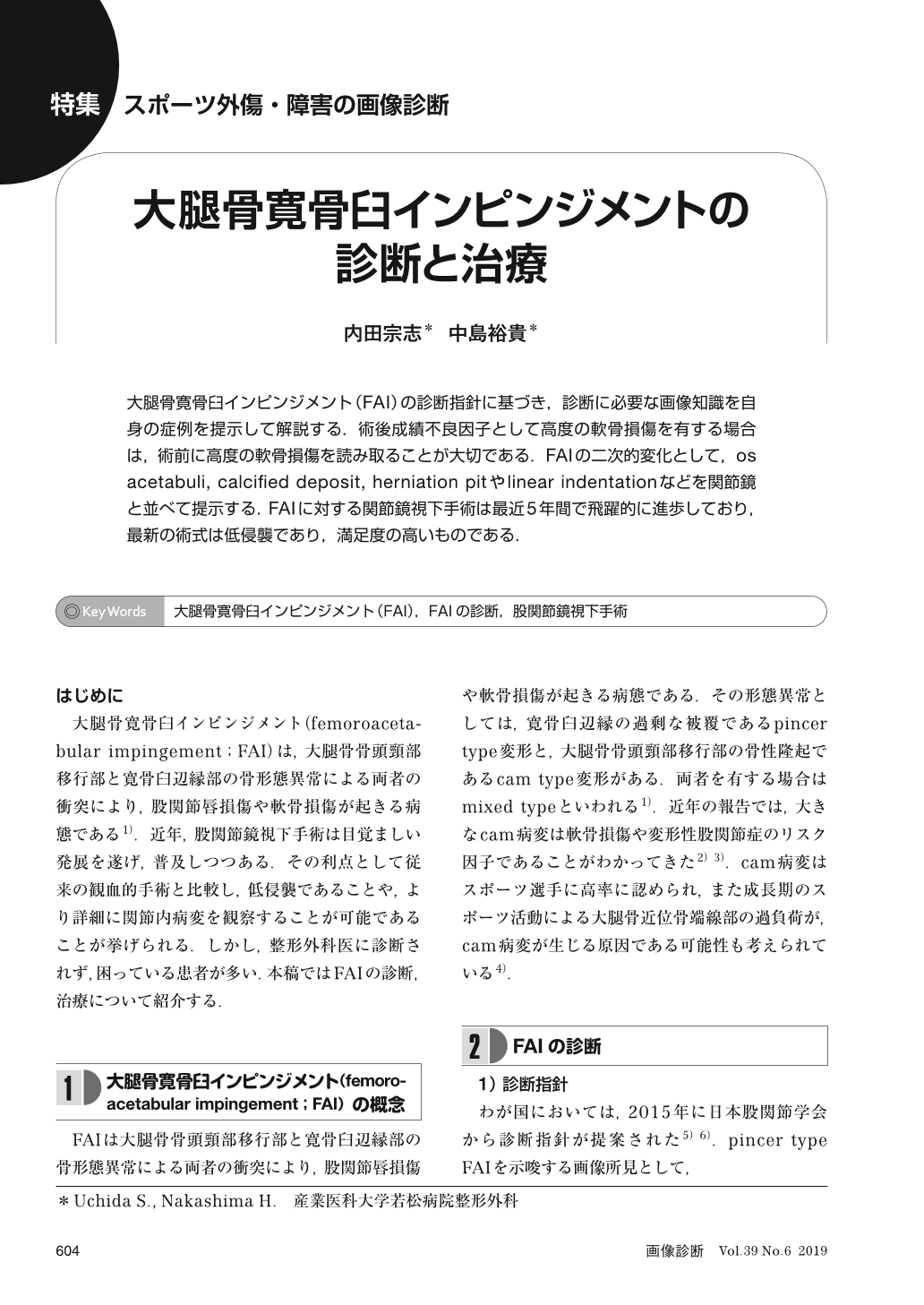71 0 0 0 OA 分子系統解析によるクワコの進化と日本列島の地理的変動との関係
- 著者
- 川西 祐一 前川 秀彰 中島 裕美子
- 出版者
- 社団法人 日本蚕糸学会
- 雑誌
- 蚕糸・昆虫バイオテック (ISSN:18810551)
- 巻号頁・発行日
- vol.79, no.2, pp.2_109-2_117, 2010 (Released:2016-04-21)
- 参考文献数
- 53
30 0 0 0 低線量・低線量率放射線のヒトへのリスク決定要因に関する基礎的研究
1. 異なる線量率(0.57Gy/分〜0.0002Gy/分)で発生腫瘍の異なる2系統のマウスC3H/HeJ,C57BL/6Jに、6週齢より7日間隔で4回Co-60ガンマ線を照射(総線量2Gy,6.8Gy)し、腫瘍発生における線量-線量率効果係数(DDREF)を求めた。その結果、(1) 低線量率照射により、全腫瘍および固型腫瘍発生の遅延(両系統2および6.8Gy)と白血病発生に顕著な線量率効果が認められた。DDREFは6.8Gy照射で20〜40、2Gy照射で約2であった。(2) 固型腫瘍については、全固型腫瘍発生率でみるとC57BLマウスで線量率効果を認めるが、C3HマウスではDDREFは1に近かった。しかし、卵巣腫瘍が高発するため、卵巣腫瘍およびC57BL/6Jマウスに自然発生する細網肉腫を除外したが、傾向は変わらなかった。臓器別にみると、肺、乳腺、下垂体腫瘍に線量率効果が認められ、DDREFは2〜3(両系統)であった。2. X線、^<60>Coγ線、^<252>Cf中性子線による胎児死、奇形、がん、突然変異の同一個体検出をPTHTF_1法を用い行った。X線では、いずれも明確な線量率効果を認めた。また、^<252>Cfによる突然変異とがん発生のRBEは、^<60>Coγ線とX線に対し、いずれも6〜9であった。3. DNA二重鎖切断欠損培養細胞と野生型培養細胞を用いた、^<60>Coγ線による細胞致死効果の線量率効果は、大部分が二重鎖切断の修復によるものだが、一部それ以外のプロセスがある。4. 微量放射能によるヒトでの遺伝子変異の調査:チェルノブイリ事故による放射能被曝者(放射性物質除去作業者、汚染地域住民など)の血液採取し、白血病早期発見のため、WT1遺伝子発現の定量と分子レベルでの遺伝子変異の高感度検出法の開発を行った。
15 0 0 0 OA 放射線および化学物質の直接人体影響とそのメカニズム
放射線、化学物質の人体の直接影響とそのメカニズムについて、我々のヒト臓器・組織長期維持システム(Super-SCID マウス)を用い、がん等ヒト疾患組織、正常肺組織への直接影響(増殖抑制、遺伝子発現変化)を検出し、これらヒト組織での放射線源(X/ガンマ線、粒子線、重粒子線)による放射線生物効果比を新たに求めるとともに、そのメカニズムについて、炭素線がヒト正常肺に特異的に誘発する遺伝子発現の変化は、ヒト甲状腺組織が中性子線等に特異的に反応した遺伝子群と異なることを明らかにした。極微量TCDDがヒト甲状腺ホルモン分泌を抑制することも明らかにした。
8 0 0 0 OA 放射線、化学物質の継世代的(遺伝的)影響-マイクロサテライト突然変異誘発と疾病
7 0 0 0 微量放射線のヒトおよび生態系におよぼす遺伝的影響
- 著者
- 野村 大成 KRUPNOVA Eve ELISSEEVA Kl 本行 忠志 中島 裕夫 杉山 治夫 ELISSEEVA Klavdiya G. EVELINA V.Kr KLAVDIYA G.E MATSKO Vladi 藤堂 剛
- 出版者
- 大阪大学
- 雑誌
- 国際学術研究
- 巻号頁・発行日
- 1996
1. 汚染地域での土壌・生態系での放射性物質の蓄積とその核種: 汚染地域(ゴメリー、コイニキ、ブラギン)と対照地域(ミンスク)の土壌、植物、野生動物等での放射性物質の測定と核種の同定を行った。殆ど全てが^<137>Csである。チェルノブイリ核施設崩壊後、土壌、水中より放射性降下物は減少していっているのに対し、10年たった現在でも、草木、食用植物(イチゴ、キノコ等)、水棲動物(鯉、カエルなど)など野生動植物への強度の濃縮を認めた。バッタ、トンボ、モグラ、マウスへとより高度の放射性物質の生物学的濃縮がみられた。2. 微量長期汚染の生態系への継世代的影響: 野生のショウジョウバエ、カエル、ハタネズミでの染色体異常の検出を行ったところ、カエル等に事故後10年たった今も、直後とほぼ同じぐらい高頻度に染色体異常が検出された。これは、継世代的影響と考えるよりも、野生動物に高濃度の放射能が残存(濃縮)しているためと考えた方がよい。3. 生物学的影響の実験研究: 粉末化した野イチゴ、キノコなどの食物を飼料に混ぜてショウジョウバエ幼虫を飼育し、ショウジョウバエ翅毛突然変異検出を行った。赤イチゴで、有意に体細胞突然変異が検出された。4. ヒトでの遺伝子変異の調査: 放射能被曝者(放射性物質除去作業者、汚染地域住民など)およびその子供(約200名)の血液より単核球を採取し、白血病早期発見のため、WT1遺伝子発現の定量と分子レベルでの遺伝子変異の検出を行った。被曝者56名中血液症状を有した者28名中16名に異常に高いWT1遺伝子の発現がみられ、白血病高リスク群であることを示唆した。血液症状を呈しない被爆者28名中7名にも軽度のWT1の発現がみられたが、ミンスク在住正常人にも同じ傾向がみられた。しかし日本人49名や、日本在住のコーケシアン26名には全くWT1の異常値がみられず、今後の課題となった。
1.ヒト臓器・組織の長期継代維持:手術、検査後の残余ヒト甲状腺組織、骨髄細胞の譲渡を受け、改良SCID(重度複合免疫不全)マウスに移植、長期維持し、放射線照射を行った。2.放射線誘発ヒト甲状腺障害:頭頚部癌患者(約60才)由来ヒト正常甲状腺では、照射線量の増加とともに濾胞の消失と壊死がみられた。k-ras,p53,c-kit,β-catenin,RET遺伝子の変異は、非照射、10-20Gy照射では認められず、24-65Gy照射で、11例中6例にp53,c-kitの突然変異が誘発された。(1)若年者高感受性:Graves病若年患者(20才)由来の甲状腺100片を移植し、^<137>Csガンマ線(1Gy)を毎週照射した。病理的変化に加え、ヒト甲状腺ホルモン分泌は、9Gy以上照射で有意に低下した。^<131>I(0.5MBq)投与群でも同じであった。遺伝子変異は、6-16Gy照射で、p53およびc-kitに突然変異が計27.3%に発生した。^<131>Iを投与した20例では、1例にのみβ-catenin遺伝子の突然変異が誘発された。(2)線量率効果:^<137>Csガンマ線を高線量率(1.1Gy/min)照射で18例中6例にc-kit、p53遺伝子の突然変異が検出されたのに対し、低線量率(0.4mGy/min)照射群14例には、突然変異は全く検出されなかった。また、GeneChipを用い、8500個の遺伝子の発現異常についても、線量率効果が認められた。(3)核分裂放射線:原子炉中性子線0.2Gy照射で、多くの遺伝子の発現異常が検出された。3.放射線誘発骨髄障害と治療:^<137>Csガンマ線2Gyを照射した改良SCIDマウスにヒト正常骨髄細胞を移植することにより長期生存(不死)を得た。ヒト骨髄移植1ヶ月後に^<137>Csγ線0Gy、0.5Gy、1.0Gy、2.0Gyを照射し、マウス骨髄中ヒトCD3陽性細胞は、それぞれ38.0、32.3、25.4、2.7%と減少した。CD20、CD33陽性細胞も同じ傾向を示した。
5 0 0 0 核分裂放射能によるヒト臓器・組織障害の発生機構
1.ヒト臓器・組織置換マウスの作製と維持:IgG、IgM値が検出限度以下のC57BL/6J-scid等を大量生産し、ヒト甲状腺、骨髄、肺、胎芽組織片等の長期継代維持を行った。2.核分裂放射能の影響:(1)近畿大学原子力研究所原子炉UTR-KINKI(熱出力;1W,炉心分の熱中性子;最大10^7n/cm^2・sec程度)を用い、照射SCIDマウス体内での正確な中性子線、ガンマ線被曝線量を得た。(2)ヒト甲状腺、肺組織を移植したSCIDマウスに中性子線1回0.2Gyの照射を7日毎に6回および4回繰り返した。ヒト甲状腺、肺組織ともに、ρ53,K-ras, c-kit,β-catenin、RET、bak、BRAF遺伝子の変異は得られていない(γ線11-33Gy急照射では、20例中8個のP53,c-kitの突然変異が有意に発生したが、緩照射では0であった)。また、GeneChipを用いた遺伝子発現異常の解析(8,500遺伝子)をヒト甲状腺とヒト肺組織において4回照射1週間後に行ったところ、甲状腺で59.7、肺では11.5個の遺伝子で4倍以上の変化がみられた。3.放射性ヨード(^<131>I)の影響:0.5MBq/マウスのI-131投与を週1回繰り返した。37週以上群で18例中6個の突然変異が誘発された(p53,β-catenin)。0.06〜0.5MBq/マウス1回投与でも25-51.5個の遣伝子発現異常がみられ、強い影響を確認できた。4.チェルノブイリ核施設崩壊事故被曝者にWT1遺伝子の発現異常が有意に検出された。白血病発生のとの関連が2例にみられた。被曝者F_1のマイクロサテライト変異の調査も行った。5.放射線障害防護実験:ガンマ線による発生異常、白血病に対し、担子菌菌子体由来物質の有意な予防効果をみつけた。以上、当初計画どおりの成果を得た。
5 0 0 0 OA チェルノブイリ放射能汚染シミュレーションによる継世代的遺伝毒性と発癌のリスク推定
チェルノブイリ原発事故以来、低レベル放射能汚染地域に生活するヒトへの遺伝的影響が懸念されている。ヒトへの影響研究の代替法として放射能汚染地のシミュレーション実験を行い、0、10、100Bq/mlの^<137>CsCl水を8カ月間給水し続ける低レベル放射能汚染環境下での内部、外部被曝マウスにおける腫瘍形成性とゲノムストレスへの影響を検討した。その結果、10、100Bq/ml各群で遺伝子切断頻度は有意に上昇したが、小核試験、ウレタン誘発による肺腫瘍発生頻度、増殖速度では、対照群との間に有意な差が認められなかった。
4 0 0 0 OA 戦後日本の地域産業の発展と変容
3 0 0 0 OA 戦後日本における専門部品メーカーの発展 -一九四五~六〇年、電子部品産業の事例-
- 著者
- 中島 裕喜
- 出版者
- 経営史学会
- 雑誌
- 経営史学 (ISSN:03869113)
- 巻号頁・発行日
- vol.33, no.3, pp.1-27, 1998-12-25 (Released:2009-11-06)
This paper focuses on Electronic Components makers (of mainly capacitors, resistors, transformers, speakers) from 1945 to 1960. Though most of them were small and medium firms, they established a high volume of production with many new components that large scale firms were unable to make. They also achieved a high growth in their scale of operations from less than 10 workers to more than 300, sometimes 1000 workers within only a 15 year time period. These firms will be referred to as Specialty Components Makers. Here I study how they achieved such progress. In doing so, this period will be divided into two eras of Reconstruction (1945-52) and Growth (1953-60).During the Reconstruction era, many electronic components makers were founded. The founders didn't require expensive capital equipment because electronic components were labor intensive. They sold their products through merchants mainly located in Tokyo and Osaka. The merchants established a wide marketing network and components makers could increase their sales through these networks. To increase production without much investment they formed many cooperative associations. Furthermore, they needed to acquire much electronic technology and founders pursued various cooperative investigation by the support of public research institutes.During the growth era, the radio and television industries began developing quickly. Main customers of component makers switched to radio and television assembling makers. To catch up with increasing demand, components makers had to expand their product line. Much of investment was put into building factories and firm scale expanded. They also needed to produce high quality components. However such a huge investment created a lack of funds for research. So they were still strongly dependent on cooperative investigations. As a result, many components makers became specialized components makers, accumulated high technology within the firm, and achieved high volume production by the end of 1950s.
3 0 0 0 OA 放射線の生体影響を理解するための数理モデルの重要性—もぐらたたきモデルとその後の進展—
- 著者
- 真鍋 勇一郎 衣川 哲弘 和田 隆宏 田中 聡 角山 雄一 中島 裕夫 土岐 博 坂東 昌子
- 出版者
- 公益社団法人 日本アイソトープ協会
- 雑誌
- RADIOISOTOPES (ISSN:00338303)
- 巻号頁・発行日
- vol.69, no.7, pp.243-252, 2020-07-15 (Released:2020-07-15)
- 参考文献数
- 30
放射線の生体影響は様々なデータが蓄積している。しかしながらそれらの定量的,体系的な理解が不足している。我々は数理モデルによる理解を進めて来た。現在までの研究の進展と今後を展望したい。また,分野横断研究の必要性についても述べたい。
3 0 0 0 OA 敗血症とDICを合併した非穿孔性急性虫垂炎の1例
- 著者
- 横山 靖彦 山本 佳生 佐藤 崇 中島 裕一 橘 球 内田 正昭
- 出版者
- 日本臨床外科学会
- 雑誌
- 日本臨床外科学会雑誌 (ISSN:13452843)
- 巻号頁・発行日
- vol.76, no.10, pp.2466-2470, 2015 (Released:2016-04-29)
- 参考文献数
- 14
- 被引用文献数
- 3 3
症例は39歳,男性.下腹部痛,嘔気を主訴に当院を受診.初診時,右下腹部に限局して圧痛を認めたが,明らかな腹膜刺激症状や筋性防御は認めなかった.腹部単純CTで虫垂の腫大を認め,急性虫垂炎と診断した.微小石灰化を認めたが,腹水や膿瘍の所見は認めず,保存的に加療した.入院後1日目は腹部所見,血液生化学検査所見ともに改善を認めたが,2日目に40℃の高熱,ショック状態となり,虫垂穿孔による腹膜炎と敗血症性ショックを疑い緊急手術を施行した.術中所見では虫垂の穿孔,腹水は認めなかった.術後,昇圧剤や抗生剤などの集学的治療で全身状態は改善し,術後14日目に退院となった.病理組織診断は壊疽性虫垂炎で虫垂に明らかな穿孔は認めなかった.血液培養からはPeptostreptococcus prevotiiが検出された.敗血症とDICを合併した非穿孔性急性虫垂炎の報告は稀であり,若干の文献的考察を含め報告する.
2 0 0 0 OA 心臓形態形成の新しい発生学
- 著者
- 中島 裕司 安藤 克己 山岸 敏之
- 出版者
- 日本集中治療医学会
- 雑誌
- 日本集中治療医学会雑誌 (ISSN:13407988)
- 巻号頁・発行日
- vol.13, no.2, pp.115-123, 2006-04-01 (Released:2009-03-27)
- 参考文献数
- 85
- 被引用文献数
- 1
ヒトの心臓形態形成は胞胚期(受精後2週)から始まり胚子期の終りに完成する(受精後7~8週)。拍動する原始心筒は3週の終り頃形成され,d-loop形成,心内膜床形成,中隔成分の形成とそれらの整列融合といった複雑な発生過程を経て,四腔を持った心臓が完成する。これらの形態形成過程の異常は先天性心疾患の原因となる。分子発生生物学,分子遺伝学の研究により,心臓形態形成過程をコントロールするさまざまな遺伝子が明らかにされ,先天性心疾患を伴うヒトのHolt-Oram症候群やdel22q11症候群の原因遺伝子は,それぞれTbx5,Tbx1の点突然変異であることが報告された。また成体の骨髄や心臓で心筋に分化転換可能な幹細胞が発見されたことにより,変性心筋による機能不全に対する心筋再生医療の可能性が示され,今後の臨床応用への展開が期待されている。
- 著者
- 中島 裕夫
- 出版者
- Journal of Radiation Research 編集委員会
- 雑誌
- 日本放射線影響学会大会講演要旨集
- 巻号頁・発行日
- vol.2011, pp.166, 2011
東日本大震災により発生した福島原発事故は広範囲の放射能汚染を引き起こした。この汚染状況については近々文科省・大学連携調査による詳細な汚染マップが作成されることになっているが、この汚染がどれくらい続くかの予測は非常に難しく実際には時間経を待たなければ正確にはわからないのが現状である。しかし、今後の除染作業や避難指定期間などを検討する上では重要な因子の1つと考えられることから、<SUP>137</SUP>Csの生体内動態を調べるとともに今までに報告されているデータを基に福島原発事故汚染地域に棲息する動物を中心とした当初の生態学的半減期の推測を試みた。<BR>【方法】<B>生体内動態</B>1.マウスに1kBq/g体重の<SUP>137</SUP>CsCl水を単回経口投与した群、10ならびに100Bq/mlの<SUP>137</SUP>CsCl水溶液を8ヶ月間自由摂取させた群において<SUP>137</SUP>Csの摂取条件(高濃度急性、低濃度慢性摂取)のちがいによる<SUP>137</SUP>Csの経時的体内動態の差異を調べた。2.植物葉の汚染状況の経時的変化を調べ、動物の摂取状態と摂取量の変化を予測した。<BR><B>生態学的半減期の推測</B> 今までに得られている1960年代の大気圏内核実験ならびに1986年のチェルノブイリ原発事故による日本への放射性降下物に由来する<SUP>137</SUP>Csホールボディーカウントの半減期(Uchiyama,M. et al.1996)、ノルウェー(Jonsson,B. et al. 1999)とイギリス(Smith,JT. Et al. 2000)の湖のマス体内の<SUP>137</SUP>Cs量の半減期、以前、本学会で報告した1997年から2005年におけるチェルノブイリ汚染地域動物体内の<SUP>137</SUP>Cs減少率(Nakajima,H. et al. 2006)などのデータを基にして、今後、新たに放射性物質の広範囲な放出がないという条件で福井原発汚染における当初の生態学的半減期(動物体内)の推測を試みた。<BR>【結果】生態系での初期では葉表面に付着した降下<SUP>137</SUP>Csを直接摂取する形で大量の<SUP>137</SUP>Csを体内へ取り込んだと考えられ、時間の経過と共に雨などで洗い流された<SUP>137</SUP>Csが土壌に浸透し、植物等の根からの吸引により植物体内へ移行したものを摂取していると考えられる。また、<SUP>137</SUP>Csの生態学的半減期(動物体内)は、おおよそ1.5年と推測された。
2 0 0 0 —(もういいかげん新人じゃないけれど)—「頼りたい気持ち」の研究
研究の動機 「私って看護師に向いてない」。看護師になった今もずっとそう思っている。いつからそう考えるようになったのか……思い返してもわからない。たぶん子どもの頃から「救命病棟24時」的なテレビの影響で、看護師というと「てきぱきしていて、よく気が利く」イメージが強かったのかも。私はとにかくどんくさい。 ホスピスでのボランティアを経て、看護師になろうと決めた時も、「まあ、絶対向いてはいないけど、でもやってみたいし、向いてなくてもやってみよう」と思っていた。私のやることに反対したことのなかった父親も、「看護師はやめておけ」と忠告してきた。案の定、看護学校に入学してからも、実習では先生に怒られてばかりいた。そもそもプライベートでも、気を利かせたり、頼られたりすることはとにかく苦手。居酒屋でサラダを取り分けるのすら恐怖。
琵琶湖病院のこと 今回、私たち就労継続支援B型BaseCamp★1の職員は、滋賀県大津市にある琵琶湖病院を取材する機会をいただいた。 琵琶湖病院は、2017年から組織的にオープンダイアローグをベースにしたケアミーティングに取り組んでいることで有名な病院で、NHKでも取り上げられたことがある。『精神看護』2019年11月号の特集(「琵琶湖病院で始まっているオープンダイアローグを取り入れた日常診療」)を読んでいた私は、前々から興味を持っていた。その琵琶湖病院の医師の村上純一さんが、私たちを病院へ招待してくださったのだ。
2 0 0 0 eポートフォリオと連携した就職活動支援システムの提案
近年,大学生の就職活動と企業の採用活動のミスマッチが問題となっている.学生は大企業志向の傾向が強く,普段あまり目につかない業種や中小企業に目を向けて採用先を探しきれていない.本研究では,企業が求める人材像と学生の適性とのマッチング支援を目的とし,就職活動支援システムを提案する.本システムは,学習成果物と学生のスキル向上過程の気づきを記録するeポートフォリオと,企業の採用ページから特徴語を抽出し,その特徴語とeポートフォリオに蓄積された学生の能力(社会人基礎力等)スコアとの適合性に基づいて,マッチング度合を提示する機能から成る.本稿では,本システムの概要とプロトタイプシステムの開発について述べる.
2 0 0 0 大腿骨寛骨臼インピンジメントの診断と治療
- 著者
- 内田 宗志 中島 裕貴
- 出版者
- 学研メディカル秀潤社
- 巻号頁・発行日
- pp.604-615, 2019-04-25
大腿骨寛骨臼インピンジメント(FAI)の診断指針に基づき,診断に必要な画像知識を自身の症例を提示して解説する.術後成績不良因子として高度の軟骨損傷を有する場合は,術前に高度の軟骨損傷を読み取ることが大切である.FAIの二次的変化として,os acetabuli, calcified deposit, herniation pitやlinear indentationなどを関節鏡と並べて提示する.FAIに対する関節鏡視下手術は最近5年間で飛躍的に進歩しており,最新の術式は低侵襲であり,満足度の高いものである.
2 0 0 0 OA トランジスタラジオ輸出の展開 : 産業形成期における中小零細企業の役割を中心に
- 著者
- 中島 裕喜
- 出版者
- 東洋大学経営学部
- 雑誌
- 経営論集 = Journal of business administration (ISSN:02866439)
- 巻号頁・発行日
- no.79, pp.73-94, 2012-03
- 著者
- 中島 裕喜 Nakajima Yuki ナカジマ ユウキ
- 出版者
- 大阪大学経済学会
- 雑誌
- 大阪大学経済学 (ISSN:04734548)
- 巻号頁・発行日
- vol.64, no.2, pp.55-69, 2014-09



